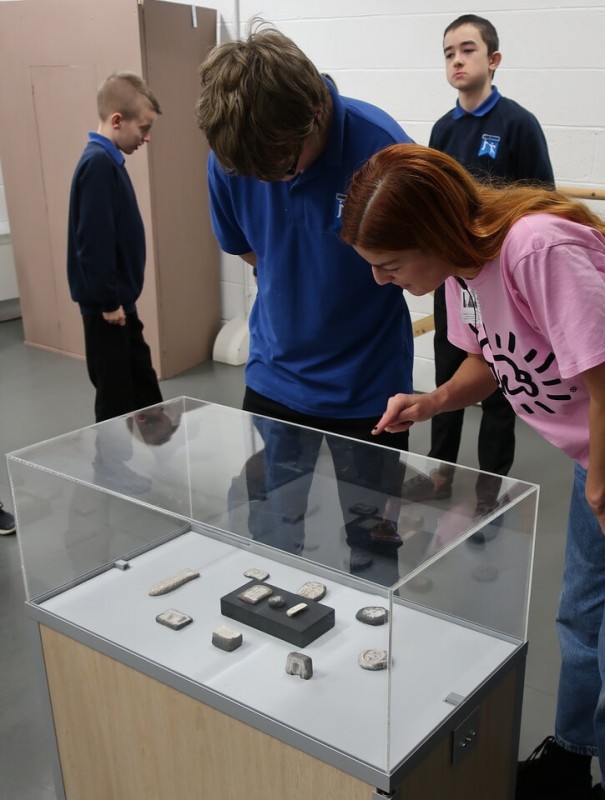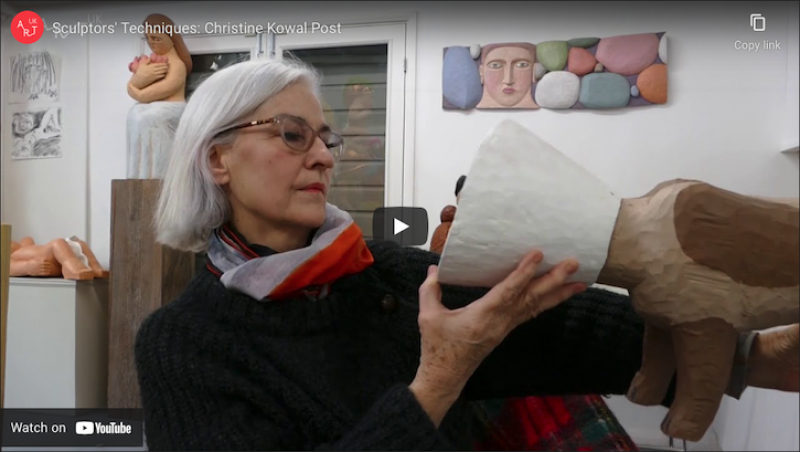'Tinted Venus'
This four-minute audio clip describes the sculpture Tinted Venus by John Gibson (1790–1866).
Full audio description text
This life-sized sculpture of a partially naked woman is titled Tinted Venus, as its white marble has been tinted with coloured pigment to make the flesh look more realistic. It was created by the artist John Gibson between 1851 and 1856. Venus stands alone within a bespoke display case, in the centre of the Sculpture Gallery at the Walker Art Gallery. The white case is cylindrical and almost two meters in diameter. It comprises a circular plinth, half a metre high, with eight slim columns positioned around its circumference, surrounding the standing sculpture. The columns rise to just above her head, meeting a domed roof. Clear acrylic panels fill the spaces between columns, fully encasing the sculpture within. The case is designed to imitate a niche showing how sculpture was originally displayed in classical architecture.
Venus is the goddess of love and beauty. She stands in a relaxed position, weight on her left leg, her right leg bent slightly at the knee. She gazes upwards, her head tilted a little to one side, her blond curls gathered up and kept in place with a headband. She holds both arms across her body. A golden armlet circles her left bicep, and her left hand holds a golden apple. Drapery hangs in deep folds from the crook of her left elbow, partially covering the front and left side of her body. As it trails over the base of the sculpture, it falls across the shell of a life-like tortoise.
Venus's surface is flawless and smooth to touch. Her skin is coloured with warm ivory. Her lips are painted a subtle red and her eyes are blue. Her blond curls are held in place with a pale blue headband and a net edged with gold. The drapery is lined with a simple pattern of blue and pink. The tortoise's shell is tinted with rich, earthy tones.
The Tinted Venus was exhibited at the London International Exhibition in 1862, where it caused a scandal. The Victorians were not offended by her naked body, nor the realistic carving; it was her tinted features that were thought to be too life-like. Gibson was among the first neoclassical sculptors to paint his statues; a common practice in ancient Greece. The Victorians, though, found this naturalism vulgar.
The golden apple was presented to Venus by Paris as a symbol of her beauty and power. In Greek mythology, Paris was the son of King Priam of Troy and his wife, Hecuba. According to legend Paris was chosen by Zeus to judge the beauty of three goddesses, known as the 'Judgement of Paris.' The tortoise at her feet is a symbol of fertility in ancient Greek and Roman classical art. On its shell are written the Greek words for 'Gibson made me in Rome'.
Born in Wales, Gibson was an apprentice to a stonemason in Liverpool. It was the renowned art collector William Roscoe who introduced him to classical art. Gibson moved to Rome and built a successful career as a sculptor. He was in his sixties when a Liverpool collector called Robert Preston commissioned him to make this sculpture. It took him five years to finish and another four years before he could let her go. It is regarded as Gibson's most celebrated work, its significance accentuated by its central location within this large gallery which displays over 160 sculptures.
Art UK and VocalEyes
This audio description was created by VocalEyes for Art UK Sculpture, a national project to document and increase access to the UK's publicly owned sculpture. This description is one of 25 representing sculpture collections across the UK.



.jpg)
























